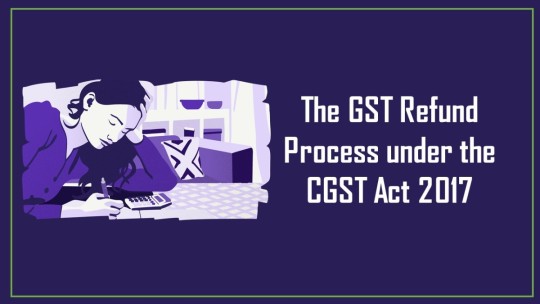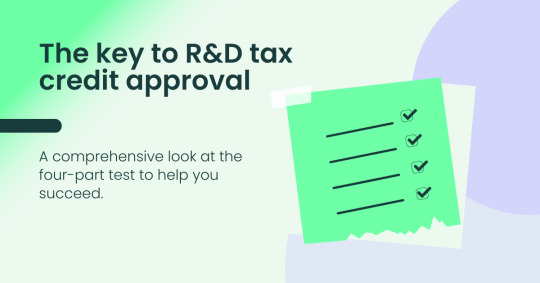#eligibility criteria
Link
Our institution is a PCI-approved college, all these courses are provided to the students in our institution. You can easily apply for these courses. If you want to know more about any course then you can contact us directly.
#Admission Process#paramedical#paramedical courses#eligibility criteria#paramedical college#nursing college#Paramedical institute in amethi#New India Nursing and Paramedical Institute#best nursing college in amethi
5 notes
·
View notes
Photo

(via Understanding the Minimum Salary Requirement for UK Work Visa Applications)
#uk work visas#visa application#minimum salary requirement#eligibility criteria#immigration guidelines#amit kakkar easy visa#visa application process#skilled worker visa#immigration regulations#visa eligibility
0 notes
Text
The GST Refund Process under the CGST Act 2017
The Goods and Services Tax (GST) regime, introduced in India in 2017, aimed to streamline the taxation system and foster economic growth by simplifying tax compliance and eliminating the cascading effect of multiple taxes. One crucial aspect of GST for businesses is the refund process, particularly under the Central Goods and Services Tax (CGST) Act 2017. In this comprehensive guide, we’ll delve…

View On WordPress
#CGST Act 2017#compliance considerations#Eligibility Criteria#finance#gst#india#legal disclaimer#news#tax#tax consultants#tax professionals#verification and processing
0 notes
Link
Caught up in a $2 million class action settlement, Panera Bread steps forward! 💼🍞 Discover the scoop behind the allegations of misleading delivery pricing and how it affects you. From eligibility criteria to claiming your dues, everything you need to know about the Panera Bread class action settlement is right here. Stay informed, stay empowered! #PaneraBreadSettlement
#Panera Bread class action settlement#delivery pricing transparency#eligibility criteria#digital orders
0 notes
Text
#Mhada lottery scheme#Maharashtra housing#affordable housing#eligibility criteria#application process#lottery draw#flat allotment#possession formalities#affordable homes in Maharashtra.
0 notes
Text
How To Get Walmart Credit Card in Canada : is it worth it
hi guys to Discover the seamless process of obtaining a Walmart Credit Card in Canada. Learn about eligibility criteria, benefits, and exclusive perks. Your guide to unlocking financial convenience.
Embarking on the journey to acquire a Walmart Credit Card in Canada is a wise decision for those seeking financial flexibility and rewards. In this comprehensive guide, we’ll walk you through the…

View On WordPress
#Approval Process#Credit Card Application#Eligibility Criteria#Financial Convenience#How To Get Walmart Credit Card#Walmart Credit Card Canada#Walmart Shopping
0 notes
Text
Explore the benefits of Avanse education loans for abroad studies and understand the eligibility criteria. Discover how Avanse can be your financial partner in realizing your dreams of studying abroad with their comprehensive overseas education loan offerings.
0 notes
Text

Dubai Tourist Visa Eligibility Unveiled
Discover the essential requirements for obtaining a Dubai tourist visa. Dive into the details of eligibility, including citizenship criteria, passport validity, health considerations, and criminal background checks. Ensure a smooth journey to the mesmerizing city with this comprehensive guide to the Dubai tourist visa application process.
Visit : Online Dubai visa
#Dubai#Tourist Visa#Visa Requirements#Eligibility Criteria#Passport Validity#Health Check#Criminal Background#Travel to Dubai#Visa Application#Dubai Tourism
0 notes
Text
Pradhan Mantri MUDRA Yojana
Pradhan Mantri MUDRA Yojana
Introduction
The Pradhan Mantri MUDRA Yojana is a government initiative aimed at providing financial support to small and micro-enterprises in India. It was launched to promote entrepreneurship and generate employment opportunities.
Objectives
Facilitate micro-enterprises to access credit
Promote financial inclusion
Encourage entrepreneurship among the economically…

View On WordPress
#Application Process#Benefits of MUDRA Yojana#Collateral-free Loans#Documents Required for MUDRA Loan#Economic Development#Eligibility Criteria#Employment Opportunities#Entrepreneurship#Financial Inclusion#Financial Support#Flexible Repayment Terms#Government Initiative#Kishor#Low-interest Rates#Micro-enterprises#MUDRA Loans#Pradhan Mantri MUDRA Yojana#Self-Sustainability#Shishu#Small Business Financing#Success Stories#Tarun Loans
0 notes
Link
Commencement of FY 2025 H-1B Visa Application Process
#h-1b visa#fy 2025#visa application#work in the u.s.#employment opportunities#legal requirements#eligibility criteria#documentation requirements#amit kakkar easy visa
0 notes
Text
0 notes
Text
#BANKING SECTOR#CIRCLE BASED OFFICER SBI#ELIGIBILITY CRITERIA#EXAM PATTERN#SALARY DETAILS#SBI BANK RECRUITMENT 2023#SBI CBO APPLY ONLINE#SBI CBO ELIGIBILITY#SBI CBO EXAM PATTERN#SBI CBO NOTIFICATION#SBI CBO NOTIFICATION 2023#SBI CBO QUALIFICATION#SBI CBO RECRUITMENT#SBI CBO RECRUITMENT 2023#SBI CBO SALARY#SBI CIRCLE BASED OFFICER#SBI JOB NOTIFICATION 2023#SBI RECRUITMENT 2023#SBI RECRUITMENT 2023 NOTIFICATION#SBI RECRUITMENT 2023 NOTIFICATION PDF#SBI RECRUITMENT 2023 QUALIFICATION#SBI VACANCY 2023
0 notes
Text
Understanding Voluntary Retirement Scheme (VRS) in India: Benefits, Eligibility, and Compensation
This article provides a comprehensive overview of Voluntary Retirement Scheme (VRS) in India, including its meaning, features, benefits, and eligibility criteria for both private and public sector employees. It also explains how the VRS compensation is calculated, its tax implications, and exemptions, and summarizes the VRS rules for central and state government employees.
0 notes
Text
4 key factors determining your qualifying activities for R&D tax credits
While it’s easy to view the R&D tax credit incentive as an amazing opportunity, it’s more difficult to gauge whether you have qualifying R&D activities. So here's the kicker: to unlock these valuable incentives, you must first pass the rigorous four-part test. Don't worry, though – in this comprehensive guide, we'll demystify the R&D tax credit four-part test, making it easier than ever for you to access your qualifying R&D activities to uplift the financial rewards your innovation deserves.

What do we mean by qualifying R&D activities?
Qualifying R&D activities relate to the specific projects and business operations that are directly related to research and development and are consequently eligible for R&D tax credits; a Governmental incentive with the purpose to financially support R&D activities across the United Kingdom. By receiving R&D tax credits, businesses can continue to invest in their endeavours, supporting the transformations of various industries. HMRC has criteria of what counts as qualifying R&D activities, and therefore which costs can be offset.
What is the four-part test (four criteria) for R&D tax relief?
The four-criteria test is a framework used to determine research and development (R&D) activities for businesses. Complying with this four-part test allows businesses to potentially access tax incentives that can significantly offset the costs of innovation, ultimately fostering growth and competitiveness in the market. However, it's crucial to stay updated on the specific regulations and guidelines related to R&D tax relief, as they can change over time. Consulting with R&D tax credit specialists such as ourselves is advisable to navigate this complex landscape effectively. Let's walk you through these four criteria one by one.
1. What is the permitted purpose?
Do your R&D activities have the aim of enhancing the performance, reliability, quality and functionality of a product or software? Could a professional in the field solve the uncertainty right now? You are eligible for R&D if you are improving something that already exists, such as increasing the protein content of a recipe or adding a robotic arm to an existing manufacturing process to increase speed. Your project must aim to create an advance in the overall field for the betterment of society, the economy, or for people and businesses’ needs.
2. What is technological uncertainty?
At any point in your project, was there a possibility of unpredictable results arising in any of your processes? Qualifying R&D activities entail working without one clear answer in sight, and therefore there’s even the chance the project could be unsuccessful. By technical uncertainty, we mean when you know something could be possible scientifically or even technologically feasible but what is unclear is how you go about achieving the project.
3. What is the process of experimentation?
Are you engaged in the process of undertaking a trial-and-error phase with the intention of overcoming technological uncertainties? Basically, this underscores the need for a systematic and structured approach to testing and refining solutions to overcome uncertainties to be able to bring innovation. To be eligible, it can’t be publicly known how to achieve your project’s aim. When you complete your R&D claim, you’ll need to describe what methods you used as part of your process of experimentation.
4. What is technological in nature?
Do your R&D activities fall within the domains of engineering, physical sciences, biological sciences, or computer science? R&D endeavours encompass efforts or undertakings that centre on generating a degree of enhancement or progress. These undertakings are not standard procedures and need to encompass an aspect of difficulty, where the resolution or remedy isn't apparent or readily attainable. Progress in science or technology denotes a stride forward in comprehensive understanding or capability within a specific realm of science or technology.
Examples of qualifying R&D activities in different sectors
The R&D incentive is such an invaluable opportunity because of the broad eligibility criteria in the R&D tax credit four-part test. The key characteristic of these qualifying R&D activities is the pursuit of improvement or advancement beyond routine practices, often involving challenges that don't have obvious solutions. The examples of these activities are presented below for more clarity.
New product development
Designing and developing a novel consumer electronic device with improved features
Creating a new pharmaceutical drug with enhanced efficacy and fewer side effects
Producing a vegan version of an existing food product
Process improvement
Developing more efficient manufacturing methods for a specific product
Designing a streamlined supply chain process to reduce production time and costs
Software innovation
Developing a sophisticated algorithm for real-time language translation
Creating cutting-edge video editing software with advanced AI-driven features
Environmental advancements
Designing a new solar panel technology that improves energy efficiency
Developing a wastewater treatment process that reduces pollution and conserves resources
Biotechnological innovations
Engineering genetically modified crops with increased resistance to pests and adverse conditions
Creating new methods for tissue engineering and regenerative medicine
Healthcare breakthroughs
Researching and developing a medical device that can diagnose diseases earlier and more accurately
Discovering a novel treatment method for a previously untreatable medical condition
Aerospace and engineering
Developing a lightweight material that enhances fuel efficiency in aircraft
Designing a new type of propulsion system for space exploration
Renewable energy research
Investigating more effective ways to store energy from renewable sources like wind and solar
Developing advanced battery technologies for electric vehicles with longer range
Data analysis and Artificial Intelligence (AI)
Creating machine learning algorithms that can predict consumer behaviour with higher accuracy
Developing AI-driven tools for personalized healthcare recommendations based on individual genetic data
Exploration of new materials
Researching and developing materials with superior strength and durability for construction
Investigating the properties of nanomaterials for potential breakthrough applications
For more examples of qualifying R&D activities, head to our case study library to see the varied and incredible R&D work of our clients.
What doesn't count as R&D activities?
When exploring which activities qualify for R&D tax relief, it's equally important to grasp what lies beyond the boundaries of R&D endeavours. You can’t claim for R&D if your advance is in:
The arts
Humanities
Social sciences, including economics
Activities that don't directly aid in addressing scientific or technological uncertainty are:
The assortment of business and monetary measures required for innovation
The efforts aimed at enhancing non-scientific or non-technological facets of a novel or significantly enhanced process, material, device, product, or service
The product manufacturing costs and distribution of services
Business management and supplementary services
Storage
Security
Maintenance
If you are unsure whether your work qualifies as R&D, please contact us and our specialists will be able to help.
Takeaways
In conclusion, a clear understanding of the R&D tax credit four-part test is crucial for organisations aiming to drive innovation and make meaningful advancements in the realms of science and technology. These activities encompass a wide spectrum of projects, ranging from pioneering product development to cutting-edge research in diverse fields. By engaging in such endeavours, businesses and researchers contribute not only to their own growth but also to the overall progress of human knowledge and capability, all while capitalising on R&D tax relief.
#r&d tax credits#hmrc#research and development#R&D activities#four-part test for R&D#R&D tax credit eligibility#eligibility criteria
0 notes
Text
Exploring the Subclass 491 Visa: Your Path to Australian Residency

Australia, known for its stunning landscapes, diverse culture, and strong economy, has long been a popular destination for immigrants seeking a better life. If you're considering making the Land Down Under your new home, the Subclass 491 Visa is a great choice. In this article, we'll explore what the Subclass 491 Visa is, its key features, and how you can apply for it.
What is the Subclass 491 Visa?
The Subclass 491 Visa, also known as the Skilled Work Regional (Provisional) Visa, is designed for individuals who want to live and work in regional areas of Australia. This visa allows you to stay in the country for up to five years and paves the way for permanent residency.
Key Features of the Subclass 491 Visa:
1. Regional Residency:
The Subclass 491 Visa is specifically intended for those who wish to settle in regional areas of Australia. Regional areas are defined as locations outside major cities like Sydney, Melbourne, and Brisbane. These regions offer unique opportunities and a different pace of life compared to city living.
2. Sponsorship or Nomination:
To apply for this visa, you need either a state or territory government nomination or an eligible family member's sponsorship. This means that you must have a connection to the region that's willing to support your application.
3. Occupation List:
Applicants must select an occupation from the relevant Skilled Occupation List (SOL) or the Regional Occupation List (ROL). Your chosen occupation must align with your skills and qualifications.
4. Points Test:
To be eligible, you must score a minimum number of points on the points test. Points are awarded based on factors like age, language proficiency, work experience, and educational qualifications.
5. Provisional Residency:
The Subclass 491 Visa is a provisional visa, which means that it grants temporary residency for up to five years. During this period, you can live and work in your chosen regional area.
6. Pathway to Permanent Residency:
One of the most significant benefits of this visa is that it offers a pathway to permanent residency through the Subclass 191 Visa. After living and working in a regional area for at least three years and meeting other requirements, you can apply for permanent residency.
7. Health and Character Checks:
All visa applicants must undergo health and character assessments to ensure they meet Australia's health and character requirements.
How to Apply for the Subclass 491 Visa:

Check Eligibility: Before applying, make sure you meet the eligibility criteria, including age, language proficiency, occupation, and skills assessment.
Choose a Regional Area: Select a regional area where you intend to live and work. Remember that this choice is vital for your application.
Nomination or Sponsorship: Secure either a state or territory government nomination or sponsorship from an eligible family member living in a designated regional area.
Skills Assessment: Obtain a positive skills assessment for your chosen occupation. This assessment verifies that your qualifications and experience meet Australian standards.
Submit an Expression of Interest (EOI): Lodge an EOI through the Department of Home Affairs' SkillSelect system. Provide details about your skills, qualifications, and other relevant information.
Wait for an Invitation: If your EOI is successful, you will receive an invitation to apply for the Subclass 491 Visa.
Apply for the Visa: Complete the visa application, including all required documents and information. Pay the application fee.
Health and Character Checks: Undergo the necessary health and character assessments as part of the application process.
Wait for a Decision: After submitting your application, you'll need to wait for a decision from the Department of Home Affairs.
Prepare for Arrival: If your application is successful, you'll be granted a Subclass 491 Visa, and you can start planning your move to Australia.
Final Thoughts:
The Subclass 491 Visa is a fantastic opportunity for individuals looking to build a life in Australia's regional areas. It provides temporary residency and, more importantly, a pathway to permanent residency, making it a popular choice for those seeking long-term settlement in this beautiful country. Remember that the application process can be complex, so it's essential to seek professional guidance if needed. If you meet the requirements and are willing to embrace the charms of regional Australia, the Subclass 491 Visa may be your ticket to a brighter future down under.
0 notes
Text
CDS Coaching in Lucknow | Eligibility Criteria
"CDS Coaching in Lucknow" refers to coaching institutes in Lucknow that provide training specifically tailored for the UPSC Combined Defence Services (CDS) examination. These institutes offer comprehensive guidance, study materials, mock tests, and expert mentoring to aspirants preparing for the CDS exam. The coaching centers in Lucknow focus on preparing candidates for all the three elements of the CDS exam: written examination, interview, and personality test, helping them enhance their chances of success in the competitive exam.
Eligibility Criteria
The eligibility criteria for the UPSC Combined Defence Services (CDS) exam are as follows:
Nationality:
Candidate must be a citizen of India.
Subject of Bhutan, Nepal, or Tibetan refugees who came to India before January 1, 1962, with the intention of permanently settling in India are also eligible.
A person of Indian origin who has migrated from Pakistan, Sri Lanka, Burma, East African countries of Kenya, Uganda, the United Republic of Tanzania, Zambia, Malawi, Zaire, Ethiopia, and Vietnam with the intention of permanently settling in India can also apply.
Age Limit:
For Indian Military Academy (IMA): Unmarried male candidates aged between 19 and 24 years.
For Indian Naval Academy (INA): Unmarried male candidates aged between 19 and 22 years.
For Air Force Academy (AFA): Unmarried male candidates aged between 19 and 23 years.
For Officers' Training Academy (OTA): Male candidates (married or unmarried) aged between 19 and 25 years.
Educational Qualification:
For IMA and OTA: Candidates should have a degree from a recognized university or equivalent.
For INA: Candidates should have a degree in Engineering from a recognized university/institution.
For AFA: Candidates should have a degree from a recognized university (with Physics and Mathematics at 10+2 level) or Bachelor of Engineering.
Physical Standards:
Candidates must be physically fit as per the prescribed physical standards set by the UPSC.
Marital Status:
For IMA and INA, candidates must be unmarried.
For OTA, candidates can be unmarried or married.
It's important to note that the eligibility criteria might change, and candidates are advised to check the official UPSC CDS notification for the most recent and detailed information regarding eligibility requirements.
#CDS Coaching in Lucknow#Eligibility Criteria#cdspreparation#cdsexam#cdscoaching#cdsaspirants#cds exam preparation#cds
0 notes